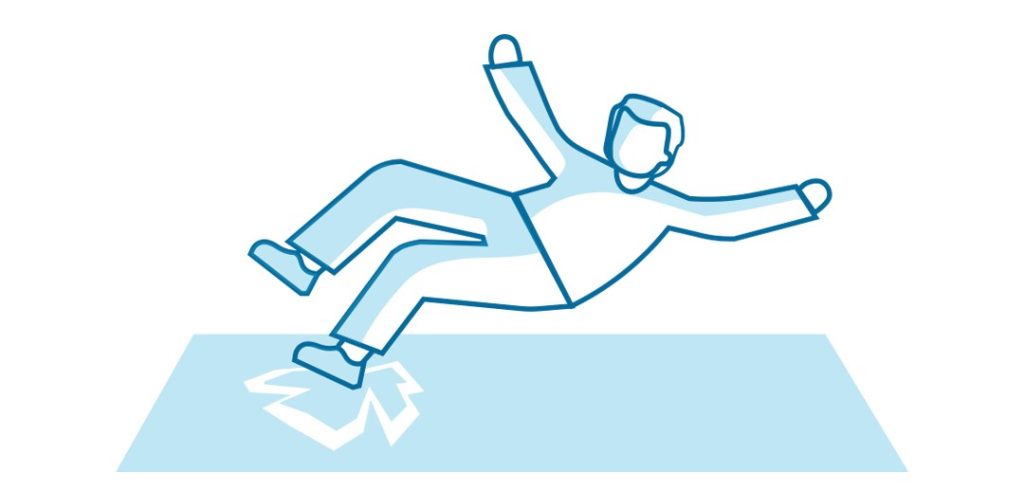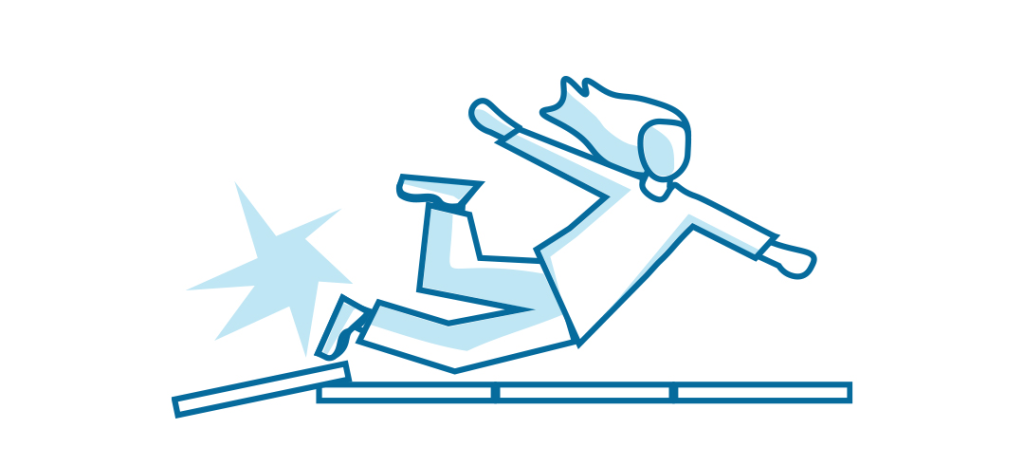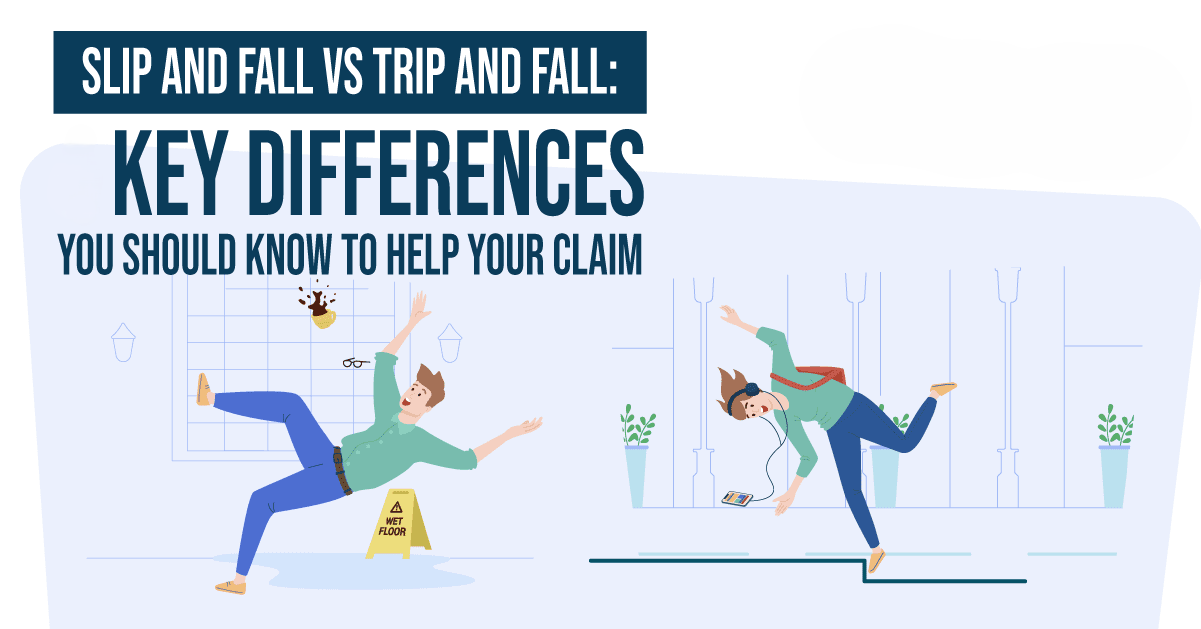Every year, you will notice that thousands of people get hurt in falls. However, most people don’t realize that slipping and tripping are two distinct phenomena. And that difference is not just about words alone, but it can also change the outcome of a court case.
If you file a claim, you will need to explain exactly what happened to maximize your compensation for your injuries. Courts and insurance companies do see slip and fall cases differently from trip and fall cases.
And so getting it right from the start can make or break your claim. Let’s examine why these two accidents are not the same.
Defining a Slip & Fall Accident

A slip and fall happens when your foot slides forward on something slick and you drop backward. One second you’re walking, the next your balance shifts behind you, and down you go.
Common causes include:
- Floors just cleaned or waxed
- Spills nobody wiped up
- Icy sidewalks without salt
- Wet bathroom floors
- Slippery carpets with poor grip
These accidents often cause injuries like sprained wrists, bruised tailbones, and head injuries. Because you fall backward, you might throw your hands out to catch yourself. That can dislocate shoulders. Many people also hit the back of their head, which in bad cases can lead to brain injuries.
Defining a Trip & Fall Accident

A trip and fall happens when your foot catches on something and you pitch forward. Your foot stops, but the rest of you keeps going straight to the ground.
Common causes include:
- Sidewalk sections that stick up
- Cords or objects left on the floor
- Door thresholds are raised too high
- Loose floorboards
- Steps without clear markings
Trips often result in a wide range of injuries. Many people can hurt their hands or wrists while trying to break the fall. Knee scrapes, broken fingers, and facial injuries are some of the common injuries. Some can also strain their neck when their head jerks forward.
Slip & Fall vs. Trip & Fall
Mixing up a slip and a trip in court can hurt your case. Judges and juries listen very closely to all the details. It can make them doubt your story if you initially say one thing and then change it later.
Here’s why it matters:
- Slip cases are about floor conditions and missing warning signs.
- Trip cases are about hazards or damaged surfaces that should have been fixed or marked.
And so that changes how your lawyer works. For example, if you slip, they’ll focus on cleaning records and maintenance. And if you trip, then they’ll look at how long the hazard was there and whether the owner was aware of it.
Property owners can also have different jobs for each. For slips, they will need to clean up the messes fast. For trips, they will need to repair the damage and keep the walkways clear.
Common Locations Examples
Slips and falls often happen in:
- Grocery stores after the floors are mopped
- Restaurant bathrooms with wet tiles
- Building entrances on rainy or snowy days
- Pool decks without grip-friendly surfaces
Example: A shopper slips on a freshly mopped store aisle without a warning sign.
Trips and falls often happen in:
- Public sidewalks with cracks or raised edges
- Stores with items blocking the aisles
- Homes with loose carpet edges
- Parking lots with potholes
Example: Someone trips over a box left in a store aisle or on a broken sidewalk slab.
Both accidents can happen anywhere. However, if property owners fail to take steps to prevent them, they can be held responsible.
What to Do Immediately After a Slip or Trip Accident
If you fall, act quickly to protect your health and your claim:
- Get medical care right away. Even if you feel fine, injuries can show up later.
- Tell the property owner or manager. Get a copy of any report they make.
- Take photos of what caused your fall before it’s cleaned or fixed.
- Write down the names and numbers of witnesses.
- Keep the shoes and clothes you wore.
- Track all medical visits, pain levels, and changes in your daily life.
- Avoid posting about it online, as insurance companies often check.
- Consult with a lawyer before speaking with insurance representatives.
How a Lawyer Can Strengthen Your Case
A skilled lawyer knows the exact safety rules and spots when someone breaks them. They can:
- Bring in experts to explain how it happened
- Find video or witnesses you didn’t know about
- Add up your costs, including future care
- Handle tough insurance adjusters
- Keep your story clear and matched to the proof
- Take care of all the deadlines and forms so you can heal
Sometimes, more than one party is at fault, as in the case of a store and its cleaning contractor. A lawyer can figure that out, too.
Conclusion
Knowing whether it was a slip or a trip is a significant matter. They happen for different reasons, cause different injuries, and get treated differently in court. If you’ve been hurt in one, take photos, see a doctor, and call a lawyer who understands these cases. The right help can get you the money you need for your medical bills and recovery.

